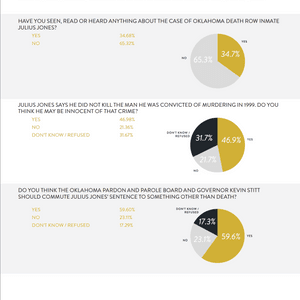How Was the Decision in Stanford V Kentucky Changed
The courts reliance solely on State laws was inconsistent with precedent and may. Kentucky asserted that capital punishment for a juvenile was consistent with the evolving standards of decency that mark the progress of a maturing society it did not analyze the sentence with respect to whether it was cruel and unusual punishment.

Major Supreme Court Decisions 2 3 Constitutional Rights Declaration Of Independence Introduced The Fundamental Rights Provided By The Constitution Right Ppt Download
Kentucky allowing the execution of murderers who committed their crimes when they were 16 or 17 years old.

. Be sure to provide the name and a brief description of the congressional act constitutional amendment. Simmons case ruled that the death penalty is a disproportionate punishment for juveniles and. What decision did the Supreme Court reach in Stanford v.
In the second case 16-year-old Heath Wilkins defendant robbed a convenience store and murdered one of the stores owners. The court considered two consolidated cases. Simmons that held that it is unconstitutional to execute someone for a crime committed as a juvenile.
Simmons overruling Stanford and holding that all juvenile offenders are exempt from the death penalty. 1 point Stanford was sentenced to death and 45 years in prison. He said it would be cruel and unusual to execute him for a crime he committed as a juvenile.
How was the decision in Stanford v. The Supreme Court in the year 2005while handling the Roper v. The Kentucky Supreme Court rejected Stanfords appeal.
Oklahoma in which the Court had held that a 15-year-old offender could not be executed because to do so would. At 17 years old Kevin Stanford was convicted by a Kentucky jury of murder sodomy robbery and the receipt of stolen property. How was the decision in stanford v kentucky changed.
361 1989 was a United States Supreme Court case that sanctioned the imposition of the death penalty on offenders who were at least 16 years of age at the time of the crime. 361 1989 Facts and Procedural History. 1 This decision came one year after Thompson v.
Oklahoma in 1988 that individuals under age 16 at the time of their crimes could not be given death sentences. Indeed Justice Brennans dissent presages the Roper analysis that juveniles are not entirely responsible for their actions at a young age. Oklahoma in which the Court had held that a 15-year-old offender could not be executed because to do so would constitute cruel and unusual punishment.
School Green High School. Kentucky was a United States Supreme Court case in the year 1989 that sanctioned the imposition of the death penalty on offenders who were at least 16 years of age at the time of the crime. Relying on Stanfords criminal history and his failure to respond to reform the court affirmed his death sentence.
Stanford was sentenced to death under a state statute which permitted juvenile offenders to receive the death penalty for Class A felonies or capital crimes. This preview shows page 3 - 4 out of 5 pages. Stanford appealed his sentence and his case was consolidated with that of.
Facts of the case. Stanford was convicted of murder first-degree sodomy first-degree robbery and receiving stolen property and was sentenced to death and 45 years in prison. The decision overturned a 5-4 decision by the Court in 1989 in Stanford v.
In 2003 the Governor of Kentucky Paul E. In 2003 the Governor of Kentucky Paul E. How was the decision in Stanford v.
Kentucky was overruled two years later by the Court decision in Roper v. 361 1989 was a United States Supreme Court case that sanctioned the imposition of the death penalty on offenders who were at least 16 years of age at the time of the crime. This case therefore provides context to.
Stanford used the Eighth Amendment to appeal his death sentence. Or subsequent Supreme Court ruling that overturned it. Be sure to provide the name and a brief description of the congressional act constitutional amendment or subsequent Supreme Court ruling that overturned it.
Pages 5 Ratings 100 5 5 out of 5 people found this document helpful. Commonwealth of Kentucky 734 SW2d 781 1987 Kentucky Supreme Courts decision. The decision in Stanford v.
This decision came one year after Thompson v. In the first case 17-year-old Kevin Stanford defendant robbed a gas station and repeatedly raped and sodomized the attendant before murdering her. The Kentucky Supreme Court affirmed the death sentence rejecting Stanfords demand that he has a constitutional right to treatment 734 SW2d at 792.
Patton commuted the death sentence of Kevin Stanford an action followed by the Supreme Court two years later in Roper v. A defendant who was approximately 17 years and 4 months old at the time he committed a murder in Kentucky was convicted of murder sodomy robbery and receiving stolen property and was sentenced to death. The Court had ruled in Thompson v.
361 1989 By a 54 vote the Court held that the infliction of capital punishment on juveniles who committed their crimes at sixteen or seventeen years of age did not violate the cruel and unusual punishment clause of the Eighth Amendment applied to the states by the fourteenth amendment. Course Title GOV 111.

The History Of The Death Penalty A Timeline Death Penalty Information Center

5 What Decision Did The Supreme Court Reach In Stanford V Kentucky 1 Point Course Hero

5 What Decision Did The Supreme Court Reach In Stanford V Kentucky 1 Point Course Hero

5 What Decision Did The Supreme Court Reach In Stanford V Kentucky 1 Point Course Hero
Comments
Post a Comment